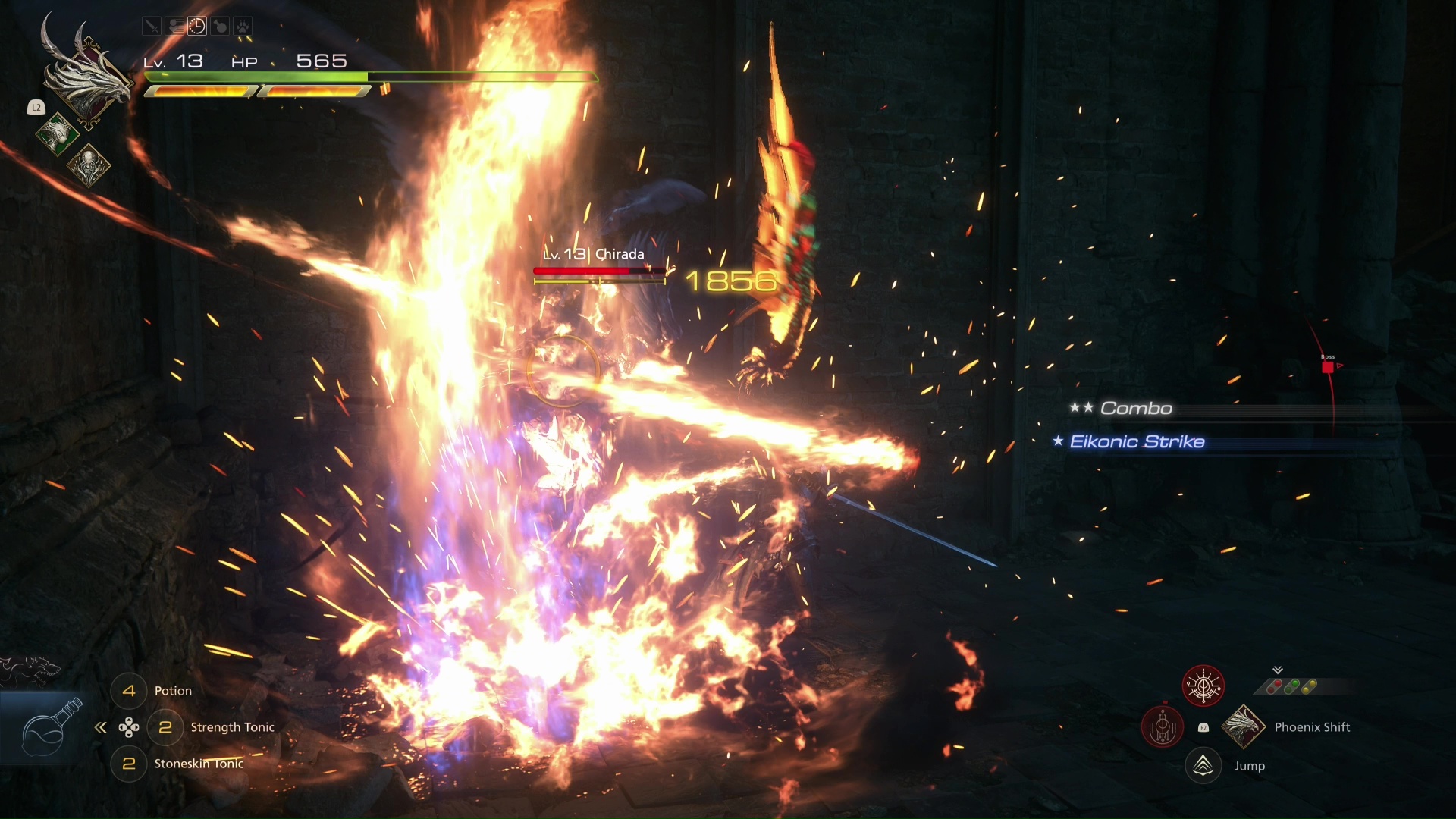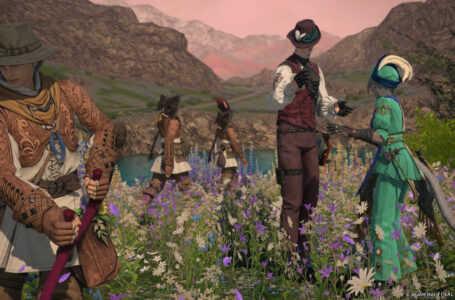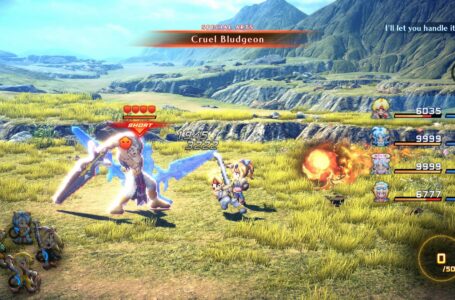Final Fantasy XVI’s demo leaves little room for doubt: this is going to be an incredible game
Final Fantasy XVI, the latest mainline installment in Square Enix’s long-running line of role-playing games, is set for release on June 22, 2023. And on the evening of June 11, 2023, producer Naoki Yoshida, localisation director Michael-Christopher Koji Fox and numerous other members of the development team hosted a five hour-long presentation showcasing the game — during which they announced the release of a demo version that would offer about two hours’ worth of gameplay, with progress able to be carried over to the full game when it releases.
Now that demo is here, we’ve spent some time with it… and dear Lord, Final Fantasy XVI is going to be something very special indeed.

The demo covers the opening section of the game, which includes a brief teaser of “present day” action where protagonist Clive and several companions are attempting to sneak across an active field of war in order to secure a Dominant — they who can control the powerful Eikon creatures, otherwise known as Final Fantasy’s iconic summon monsters. Following this, the majority of the demo unfolds with a fifteen year old Clive as the lead character, beginning with some simple battle training and culminating in some truly spectacular scenes that very much get the main scenario of Final Fantasy XVI rolling.
After completing that main section of the demo, progress from which will roll over to the full game so you won’t have to play the “intro” again, there’s a second part pulled from later in the game. This provides a preview of some of the later abilities Clive will be able to make use of in combat, as well as how complexity is added beyond simple button mashing.
We won’t spoil anything about the narrative today, as the demo is free for all PS5 owners to download and is well worth experiencing. So instead let’s spend some time talking about how Final Fantasy XVI actually plays, because that’s the thing that has probably raised the most eyebrows since its announcement, what with it being marketed as the “first true action RPG in the mainline series”.

Some of those who claim to be Final Fantasy fans have been rather resistant to what they believe is “change” for quite some time now — even with the series’ core philosophy having always been “if it’s not new, it’s not Final Fantasy“.
In particular, entries that featured radically different play styles to the turn-based mechanics of the first ten installments — most notably XI, XII, XIII, XV and VII Remake — tended to provoke cries of derision from those unwilling to try something new, with XV’s most vocal critics often falling back on “Kingdom Hearts combat” as a criticism, as if that was somehow a bad thing, even if it wasn’t woefully inaccurate.
But Final Fantasy XVI has no shame in what it is. It’s not trying to “feel” like a turn-based game while actually being an action game — although there are still moments where its traditional RPG roots are apparent. It is an action RPG, like it or lump it, because, as Yoshida said during his keynote presentation at the pre-launch celebrations, Final Fantasy always takes the form that its developers believe is the best for the series at the time of each new installment’s release.

And, honestly, having spent some time with both parts of the demo, it’s hard to deny that this is very much a good move for this particular installment, if not the series as a whole. The real-time action plays very nicely with the cinematic nature that Final Fantasy has always striven for — particularly since its seventh entry — but it’s clear that those behind the combat mechanics have been paying attention to what really worked in prior games. Including, interestingly, popular MMO installment Final Fantasy XIV.
This latter aspect should be no surprise considering that a significant chunk of Final Fantasy XIV’s development team — including producer Yoshida, composer Masayoshi Soken and localisation director Koji-Fox — worked on Final Fantasy XVI. And there’s precedent for this in the series, too; after Final Fantasy XI not only brought the series online for the first time but also introduced a semi-real-time combat system, Final Fantasy XII followed with a single-player adaptation of many of the things that worked well in its massively multiplayer predecessor.
Final Fantasy XIV isn’t an action game, of course, but games don’t have to exactly match in order to be able to draw inspiration from one another. And such is the case in the elements that Final Fantasy XVI has taken from the well-regarded MMO. Perhaps most notable is the fact that enemy attack patterns are clearly telegraphed — albeit not quite as obviously as in FFXIV — and thus provide plenty of opportunity to either position yourself strategically or prepare yourself for a timely evade manoeuvre. But a more subtle addition is the way in which the more powerful “Eikonic” abilities in Final Fantasy XVI are based on cooldown timers, meaning they’re usually quite a commitment to trigger mid-battle.

One particularly admirable inclusion in Final Fantasy XVI is a series of “Timely” accessories that can optionally be equipped on Clive to tweak the game’s mechanics to the player’s liking. For the most part, these are intended to make the game a little easier for those unaccustomed to action games — but they also provide a nice means of simply customising exactly how the game plays.
There are five Timely accessories in total, with up to three equippable at once — though it is worth noting that each takes up a regular accessory slot, thereby reducing your ability to equip various enhancements to Clive’s abilities. The increased accessibility of the gameplay is intended to make up for this, however, so the game should, in theory, remain nicely balanced.
The most “easy mode” accessories are the Ring of Timely Strikes and the Ring of Timely Evasion. The former automatically triggers combos of regular attacks, Eikonic abilities and pet commands by simply mashing the Square button on the controller, while the latter automatically evades enemy attacks that can be evaded. By equipping both of these accessories, you can make the game significantly easier, allowing you to focus more on the narrative elements if you so desire.

The other Timely accessories are a little more specialised. The Ring of Timely Assistance automates the commands it’s possible to give to Clive’s wolf companion Torgen, while the Ring of Timely Focus slows down time when it’s possible to evade an enemy attack — though it doesn’t actually evade the attack for you. Finally, the Ring of Timely Healing automatically uses healing items when Clive drops below a certain number of hit points.
You don’t have to use any Timely accessories at all if you don’t want to, or you can mix and match as you desire. It’s a really nice inclusion, and the fact that they take up accessory slots means that you can’t overpower yourself with them — just make life a little easier if you prefer it that way.
With no Timely accessories equipped at all, Final Fantasy XVI plays beautifully smoothly, with a pleasing elegance to the combat that should be no surprise considering the involvement of Devil May Cry’s Ryota Suzuki, PlatinumGames and Square Enix’s own Kingdom Hearts team.

There’s a nice contrast between fighting off grunt enemies, more powerful “miniboss” enemies and the epic clashes against the main bosses of the game, so there’s always plenty of variety. And even the most mundane encounters have clearly had some care and attention paid to them; you’ll need to take into account enemy positioning and whether or not they have any spellcasters in their ranks rather than simply hacking and slashing.
Miniboss and main boss encounters work on a “stagger” mechanic similar to that seen in several previous Final Fantasy games, including the excellent Stranger of Paradise. Here, enemies have both a main HP bar and a golden “stagger” bar, with the latter being much quicker to deplete.
At 50%, the stagger bar will cause your foe to stumble slightly, giving you a good opportunity to hit them with a nice combo. And at 0%, your foe will be knocked down or otherwise incapacitated, providing a great opportunity to hit them with everything you’ve got, building up a damage multiplier in the process. There are a number of fights in Final Fantasy XIV that work in a similar fashion to this, albeit without a specific “stagger” mechanic; it is, essentially, a twist on fights where you have to “do mechanics” before you get a good opportunity to get some clean hits in on the boss.

Final Fantasy XVI also introduces “cinematic” actions, which occur at various points in major battles. These involve mostly hands-off cutscenes, but at their climactic moments require you to press either the Square button for a Cinematic Attack or the R1 button for a Cinematic Evade, often resulting in significant damage or an immediate stagger on your opponent if performed correctly.
Then there are the Eikon battles. We get a taste of one in the Final Fantasy XVI demo, which unfolds more like Panzer Dragoon than anything else. It’s hard to tell exactly how these are going to work in the final game from what we see here, but it seems like they’re likely going to go quite hard on the cinematic angle, in contrast the more active involvement you tend to have in the fights as Clive. This is no bad thing, as once again it adds plenty of variety to the gameplay — and with Soken’s incredible soundtrack accompanying the action, you’ll be on the edge of your seat regardless of what’s happening.
Final Fantasy XVI isn’t all combat, of course, and in the few brief tastes of exploration gameplay we get in the demo, there are a few interesting things to note. Perhaps the most intriguing is the fact that the game deliberately eschews a minimap display in favour of encouraging you to explore organically. In the quasi-“dungeon” sequence we have in the demo, which sees Clive and companions exploring a swamp, the path forward is clearly but subtly signposted by scenery elements and effects such as dancing butterflies, meaning you’re never left in any doubt as to where to go — but there is always potential to investigate areas a little off the critical path to discover items, too.

The intention for Final Fantasy XVI’s demo was clearly to provide a fairly tightly scripted, focused experience that will impress newcomers, allay the fears of doubters and build the excitement of those already anticipating the game. In these respects, it succeeds admirably; it remains to be seen how much the game truly “opens up” once things get rolling properly after this initial prologue, but at this point it’s impossible to deny that this is shaping up to be one of the series’ most spectacular installments — and one of the best games of the year.
Join The Discussion
Rice Digital Discord
Rice Digital Twitter
Rice Digital Facebook
Or write us a letter for the Rice Digital Friday Letters Page by clicking here!
Disclosure: Some links in this article may be affiliate links, which means we may earn a small commission if you make a purchase after clicking on them. This is at no additional cost to you and helps support Rice Digital!
- Letter from the Editor: passing the torch - June 30, 2023
- Super Woden GP 2 is looking promising - June 30, 2023
- Inti Creates is making a 32 bit-style Love Live action platformer - June 26, 2023






